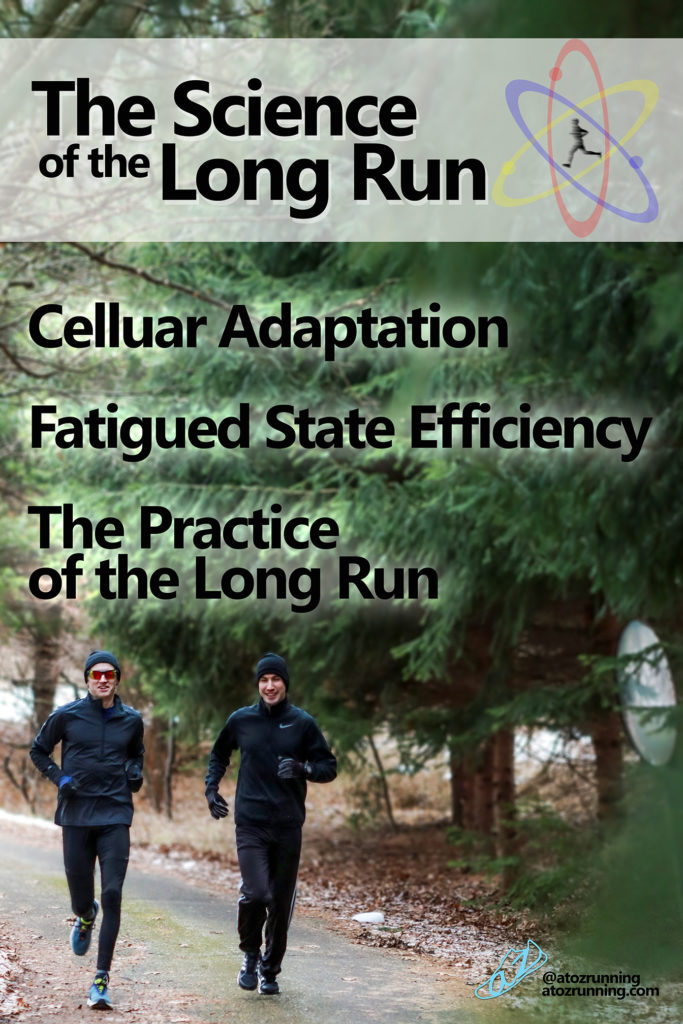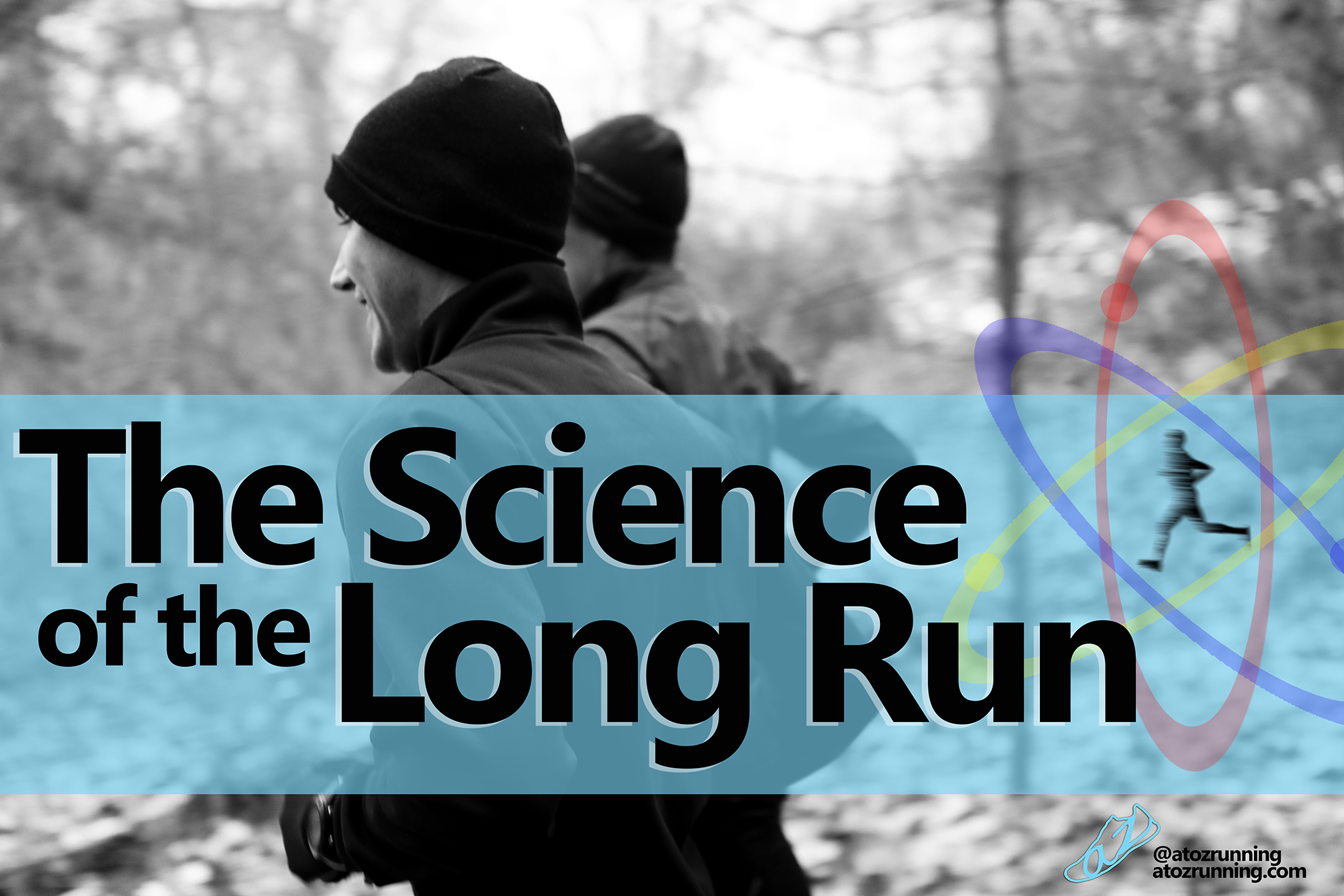The Science of the Long Run
Whether you love it or hate it, the long run is lore. I’m sure you’ve got a long run story or two, the same as I have a pocketful ready for a story swap (ask me sometime about the one with the ice castle and Yeti!). But the euphoric stories aren’t the real reason we all grind innumerable predawn weekend miles, and neither is the more common rejoinder, “I race 26 miles, so I should probably run twenty or so in training now and then.”
We long run for a much more simple and scientific reason. Many of us don’t even know the specifics of the reason. But we all know that it’s doing something. In brief, here’s the something that it’s doing (and why you should definitely continue with long runs, if you can).
The Science of the Long Run
All aerobic running increases adaptations so that over time, your system becomes more capable of sustained aerobic running. The goal of training is to achieve the highest degree of adaptation possible in a given period of time.
While many discrepant approaches to achieving that goal war for our devotion (click here for our take), our aim at this moment is to delve into the role long runs play in that factor.
Cellular Adaptations


When running in the aerobic zone, the mitochondria in our cells work to produce ATP from things like glucose, fat, and oxygen. Our heart rate elevates when the demand for that ATP is higher than the supply, requiring increased production. By entering an elevated state for a sustained period of time, we encourage our system to adapt to that new state to more effectively and efficiently fuel those muscles.
By doing so for longer periods of time, we encourage a higher degree of adaptation. Nothing quite accomplishes that aim like the long run. Let’s break it down further.
Oxygen Delivery
The duration of the long run helps you train the runner’s body to deliver oxygen as you work.
The human body is pretty cool as it adapts based on the activities you do with it. In the case of the long run, your capillaries will increase in size and you will literally grow more blood vessels to take on the load of the work you’re doing. Harvard Health Publishing states, “Exercising muscles need more blood. And in response to regular exercise, they actually grow more blood vessels by expanding the network of capillaries. In turn, muscle cells boost levels of the enzymes that allow them to use oxygen to generate energy.” What distance runner doesn’t want more energy?

Training also increases your total hemoglobin which increases the amount of oxygen that can be carried by the blood (hence why blood doping is illegal, but you can legally increase your red blood cells by increasing fitness). Read the full study here.
Fuel Depletion
One prominent (and important) result of a long run is complete depletion. You teach your body during a long sustained effort how to burn fat after your glycogen stores are out. The reason you would want to do this is to be as efficient as possible on race day. You want to be able to use every energy at your disposal. Have you ever bonked after 20? Teaching your body how to burn fat as fuel may help you avoid this.

It’s also a key signal that you have run enough. Controversially, we advise that aside from rare exceptions where you want to specifically train your race-day fuel/hydration strategy, runners should not be training with fuel intake during runs.
Why? Because when we do the cost-benefit analysis, we find ourselves unable to justify extending the possible benefit of cellular adaptations in light of the likely cost of extensive exhaustion of your mitochondria resulting in the need for serious recovery time (that many, unknowingly, ignore).
Total fuel depletion, then, without replenishment, tells us when we’ve had enough and teaches our body how to burn fat as fuel more efficiently (something we will need come race day for us marathoners!).
Fatigued State Efficiency

This one isn’t quite as scientific as those above. If we are thinking of ourselves as animals to be strengthened and machines to be fine-tuned, then distance runners, marathoners especially, need to develop our fatigue tolerance.
How do you look when you’re running tired? Where do your eyes go? What do your arms do? How does your cadence change? The unpleasant truth is that we all break down in some manner, especially when we enter the mental fatigue zone where, whatever else our body is doing, our mind just gets sick of the humdrum.
That’s where we need discipline and machine-like precision. Long runs are ripe opportunities for developing this most essential strength of successful runners. There are plenty of ways a runner can work to develop focus, mental discipline, fortitude, and such, but none of them are as effective as exercising those elements in the waning miles of an exhausting 2.5-hour run. And if you do it weekly, it’s a weekly opportunity to practice being the runner you want to be in the late stages of the race when the world around you threatens to topple but you’ve still got six miles to go.
The Practice of the Long Run


Given these considerations, common thought dictates that we really want to be running long aerobic efforts just about as often as we can. Assuming rest and the need for other kinds of work to encourage adaptations in different ways, this frequency amounts to once or twice per week.
We are big proponents of at least two long runs in a week, though one is still a bit longer (and generally fits the common definition of the weekend long run). But whatever the specific implementation, we always approach such an undertaking with careful consideration. As noted above, there is a clear line between the long run that furthers fitness and serves our long-term goals and the long run that jeopardizes our health and training and costs more than it’s worth.
Can we help you strategize your aerobic development and use of such tools as long runs in training? Our training and consultation services are NOW AVAILABLE, and we would love to help! Not sure? You can always just reach out or post a comment below (we won’t charge you just for asking us a question!).




Similar to your long run fueling philosophy, some pro Ironman athletes eat breakfast but then don’t take fuel on a long training bike until 3 hours into it for the same “using fat as fuel” reason. Of course, it may be wise to work your way up to this if your body is horrible at using fat as fuel…. otherwise, it won’t be pretty ?
Love that connection, Sage! It was, in fact, the cycling world that helped solidify this practice in my mind. And excellent crossover!